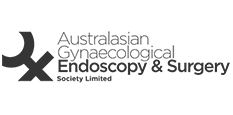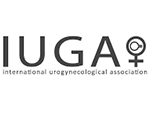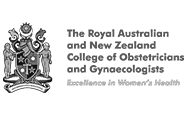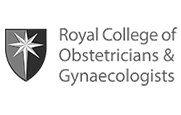Robotic / Laparoscopic Myomectomy (Removal Of Fibroid)
Why should I have a robotic / laparoscopic myomectomy?
Myomectomy is the surgical removal of fibroids from the uterus. It is a technically more difficult procedure than a hysterectomy, where the whole uterus is removed. It should ideally be carried out minimally invasively through smaller cuts in the abdomen rather than the traditional open approach through a large abdominal incision. Minimally invasive surgery has proven benefits of better vision, less blood loss, less postoperative pain, shorter recovery and better cosmesis.
Experienced surgeons with the appropriate expertise can perform a laparoscopic myomectomy safely with all the above-mentioned benefits of minimally invasive surgery. Robotic surgery is the most advanced form of laparoscopic surgery with improved vision, instrumentation and control, that is particularly suited for myomectomy as it greatly facilitates laparoscopic suturing which is a key step of a myomectomy procedure.
What are the risks of robotic / laparoscopic myomectomy?
Risks with a robotic / laparoscopic myomectomy can be considered in terms of general risks associated with any pelvic surgery and also procedure specific risks which include:
General risks associated with laparoscopic pelvic surgery:
- Reaction to anaesthesia
- Bleeding
- Wound infection
- Injury to adjacent organs
- Possible conversion to an open surgery
- Blood clot formation in the leg that may travel to the lung.
Procedure specific risks:
- Scar formation (adhesions) around the uterus where the fibroid was removed
- Risk of small fibroid fragment left growing in the abdomen
- Risk of encountering and spreading fibroid with malignant transformation
- Risk of hysterectomy (removal of the uterus) to control dangerous bleeding
- Risk of uterine rupture during future pregnancy
I have multiple large fibroids, can my fibroids be removed robotically / laparoscopically?
Whilst already considered a challenging procedure, the difficulty of fibroid removal surgery also increases depending on the size and number of fibroids. Technical difficulties with laparoscopic myomectomy include enucleation of the fibroid (shelling out the fibroid from the uterus), suture repairing the uterine defect from the removal site, safe extraction of the fibroid mass through a small incision, and controlling the bleeding throughout the surgery. Dr Chou has developed various techniques over the years to overcome these challenges including temporary clamping of the uterine artery prior to myomectomy to significantly reduce the potential for severe intraoperative blood loss, and Contained In-bag morcellation for safe extraction of fibroid tissue. The largest fibroid removed laparoscopically with the aid of a mini-laparotomy by Dr Chou was 4.2kg.
In cases of extremely large fibroid uterus where the top of uterus reaches well above the level of the umbilicus, estimated to be equivalent to a 20 week pregnancy or greater, one can consider using a 3 month course of 4 weekly Zoladex implant injection. This is a powerful hormonal medication known as a GnRH analogue that can temporarily suppress the effect of oestrogen, effectively resulting in a transient chemical menopause. This can potentially reduce the size of the fibroid by 50%, which can greatly facilitate the procedure of myomectomy. There is usually no menstrual loss during this 3-month period, which can help increase the blood count if the fibroids have been causing heavy periods, resulting in anaemia. The side effects from the Zoladex implant include menopausal symptoms, which will subside after the effect of the last injection wears off.
What is the recovery process following a robotic / laparoscopic myomectomy?
Hospital stay following a robotic / laparoscopic myomectomy is usually 2 nights. The recovery time after a robotic / laparoscopic myomectomy varies for each individual but averages around 4-6 weeks. Some people may feel well enough after 2 weeks. Following surgery, there will be post-operative pain that should be adequately managed with oral painkillers. Pain is often experienced around the pelvic region, at the skin incision sites, under the rib cage and around the shoulder tip. Regular use of painkillers as required is encouraged, not only to reduce discomfort but also to facilitate early mobilization. Physical activity plays an important role in minimising postoperative complications including the formation of blood clots in the leg and chest infections. Recovery will also be faster with early resumption of physical activity.
As your body expends a lot of energy whilst healing internal wounds, it is very common to feel lethargic and easily fatigued for a number of weeks. You will fully regain your energy and stamina over time.
There are no dietary restrictions post-surgery however the bowels often slow down for a brief period of time due to the pain medications and decrease in physical activity. One is therefore encouraged to maintain a high fiber diet with adequate hydration in order to avoid constipation. The use of mild aperients may be required.
Vaginal discharge can be present but is usually minimal. The timing of your first period after surgery may or may not be altered. The first period is usually still heavy but should lighten over time.
Heavy lifting and strenuous physical activities should be avoided for 4 weeks following the surgery. Driving should be avoided for the first 1-2 weeks, and you should not drive whilst under the sedative influence of stronger painkillers.
In most cases, you will be able to return to office work in 4 weeks. For more physical work you may require 4-6 weeks.
Sexual intercourse should be avoided for the first 4 weeks following surgery.
How long do I have to wait before trying for pregnancy?
After robotic / laparoscopic myomectomy, it is recommended to wait 4-6 months for the uterine wall to heal before trying for pregnancy where the uterus is required to expand to accommodate the growing baby. A rare but serious complication associated with myomectomy is the uterine rupture that typically occurs during labour. The risk of uterine rupture relates to the depth of uterine incision during myomectomy, which is determined by how deep the fibroid was located and if the inner uterine lining was breached. It also depends on the number of fibroids removed. As uterine rupture tends to occur during labour when strong uterine contractions pull the cervix open, patients who are assessed to be of high risk are recommend not to have a natural birth but rather elective caesarean section delivery.
Could my fibroid be cancerous?
The vast majority of fibroids are benign and the incidence of a fibroid being a leiomyosarcoma or sarcoma (malignant tumour) is around 1:1,000-1:2,000. It is more common around the age of menopause and rare in women under 40 years of age. Traditionally, malignancy is suspected in a rapidly growing large fibroid that causes pain and heavy bleeding. Fibroids are expected to reduce in size after menopause due to the decreased production of oestrogen, therefore any fibroid that grows during menopause needs to be carefully investigated. Unfortunately, there is no reliable test to determine if a fibroid is malignant prior to surgery. In fact, even during surgery there may not be distinguishable features to confidently identify early malignant changes and the final diagnosis can only be made through pathological analysis. A preoperative MRI can provide additional characterisation of the fibroid and better assess the risk of malignancy but is far from accurate. If there is a high suspicion of malignancy, an open hysterectomy should be carried out by a gynaecological oncologist, a subspecialist gynaecologist specialising in gynaecological cancers. Due to the possibility of encountering unsuspected cancerous tissue, the fibroid should be carefully removed in a contained manner through morcellation, a process of reducing the fibroid into smaller fragments to remove them through small incision. This is typically done by placing the fibroid into a special retrieval bag prior to morcellation. Contained morcellation also minimises the chance of small fragments of benign fibroid being inadvertently left behind. These can grow over time and are known as parasitic fibroids.
Should I have a hysterectomy instead?
Preservation of the uterus is clearly required for women planning for pregnancy, however if this is not the case and there is no strong desire to keep the uterus, a hysterectomy may be recommended in the following circumstances:
- Hysterectomy is a definitive treatment for heavy and painful periods
- Hysterectomy can be a safer option than a difficult myomectomy
- Hysterectomy is appropriate when there are multiple fibroids where smaller residual fibroids could cause further problems requiring additional surgery
- Hysterectomy is appropriate when there are other concurrent uterine pathologies present such as adenomyosis
- Hysterectomy is preferable when there is concern about the nature of the fibroid, either due to rapid growth or atypical appearance on imaging
- Hysterectomy eliminates the chance of cervical and endometrial cancer without need for further cervical screening















